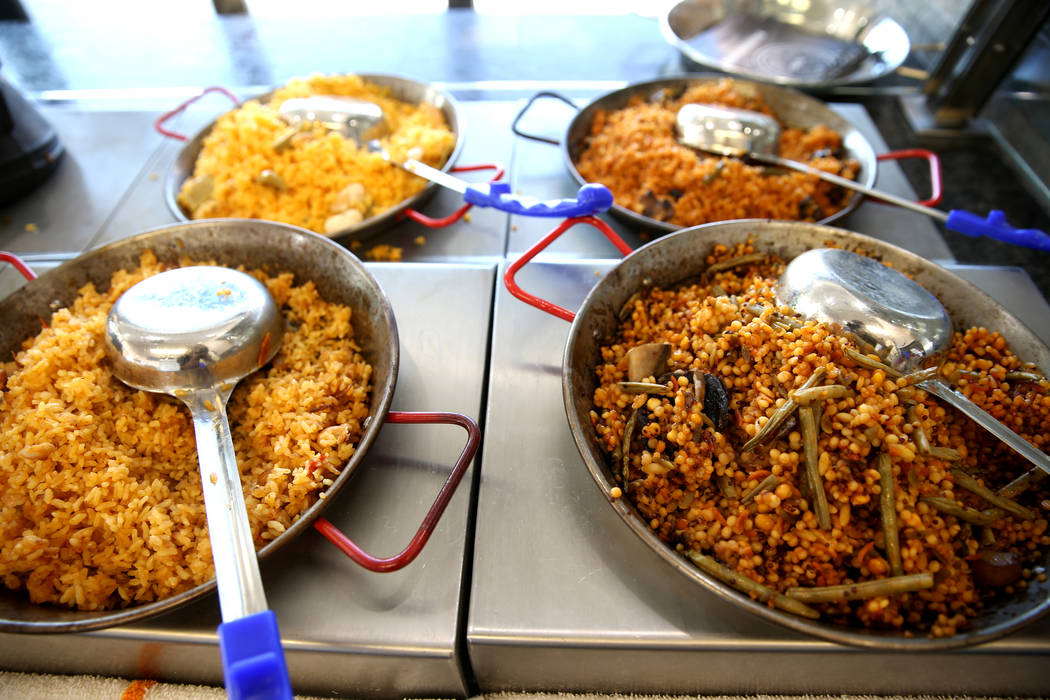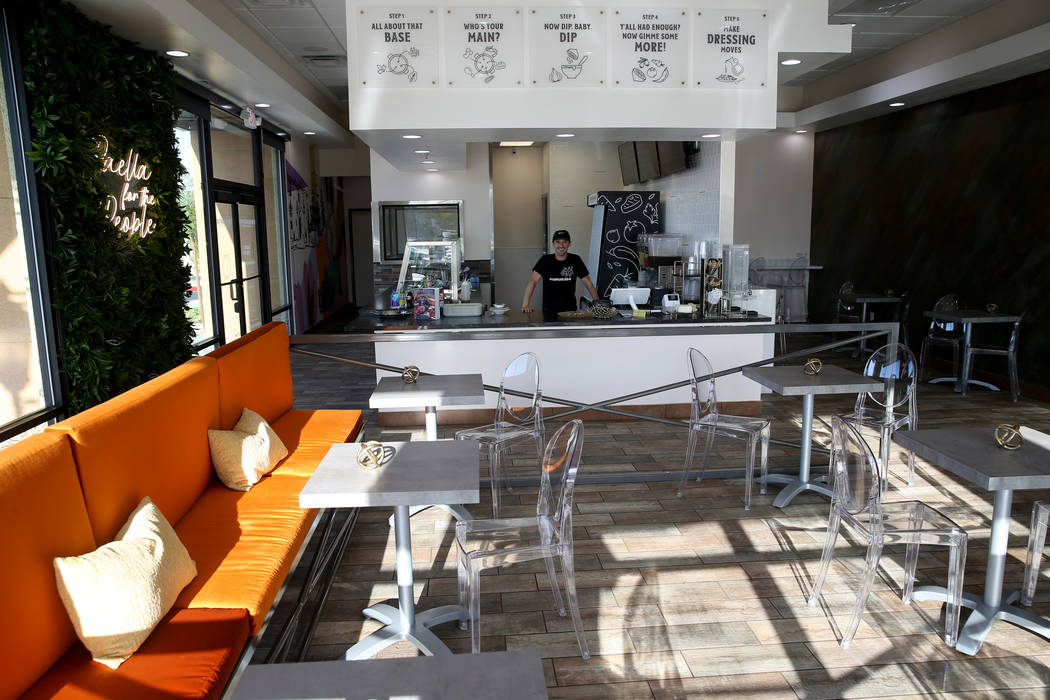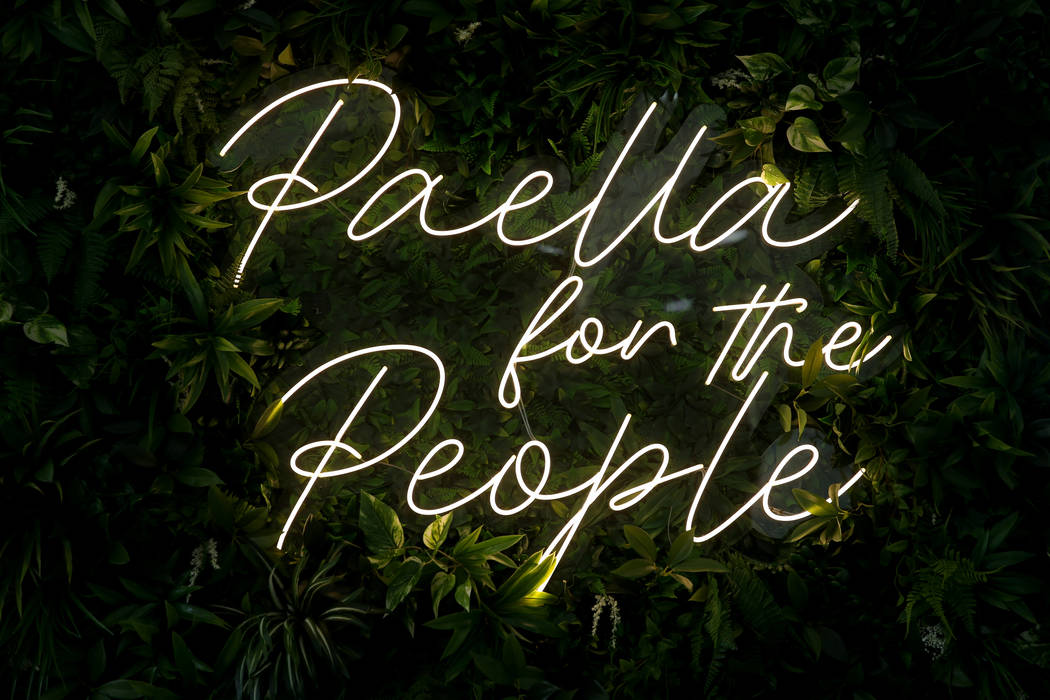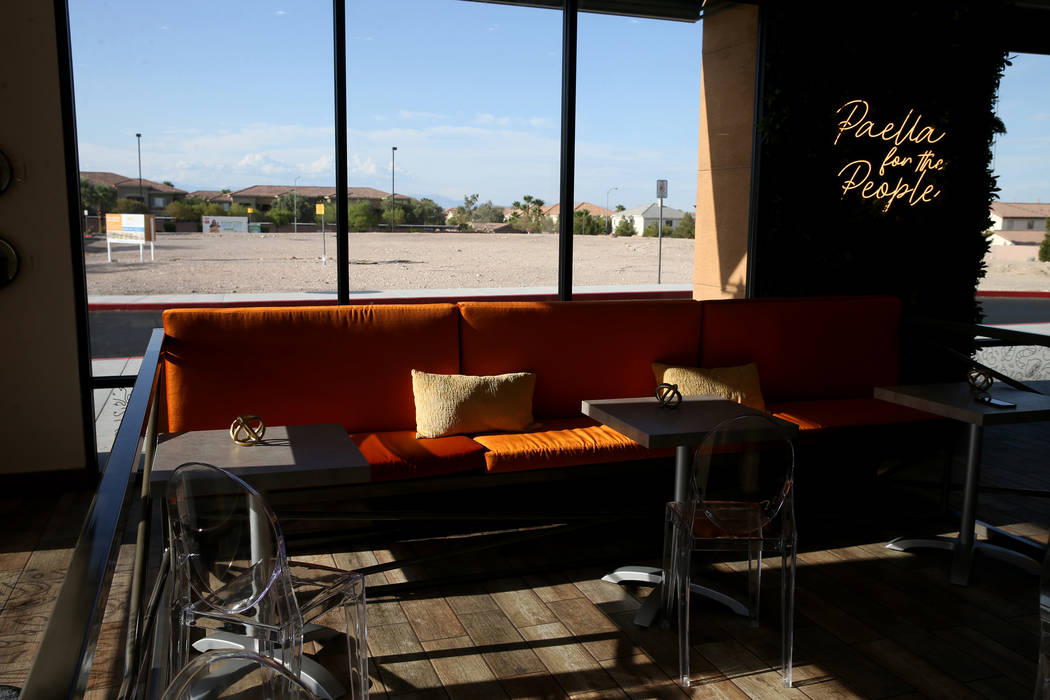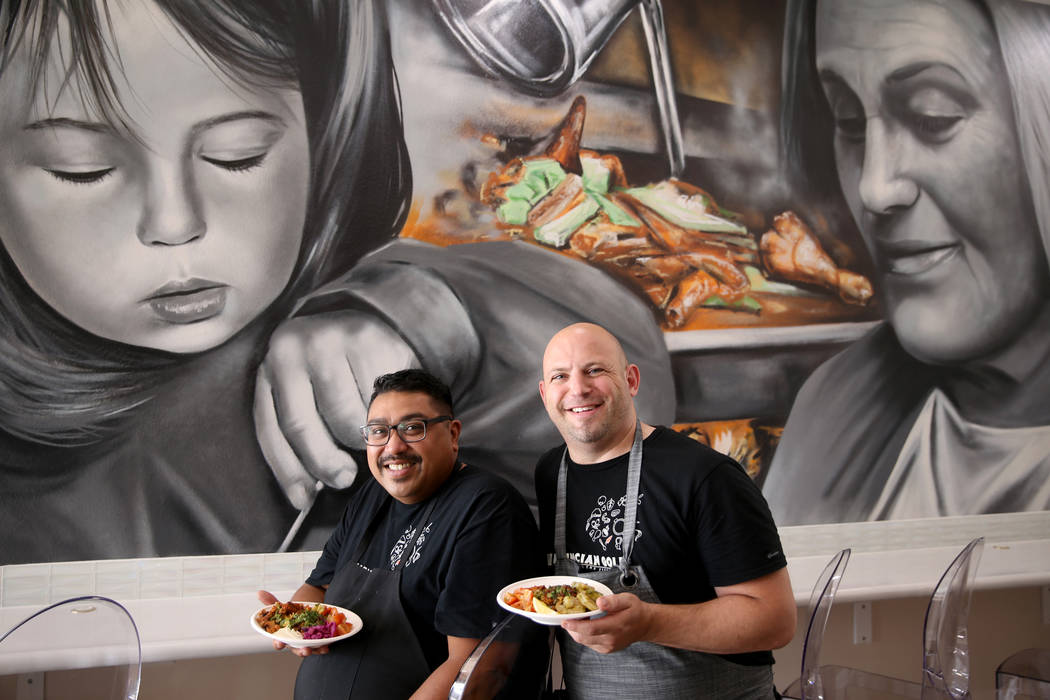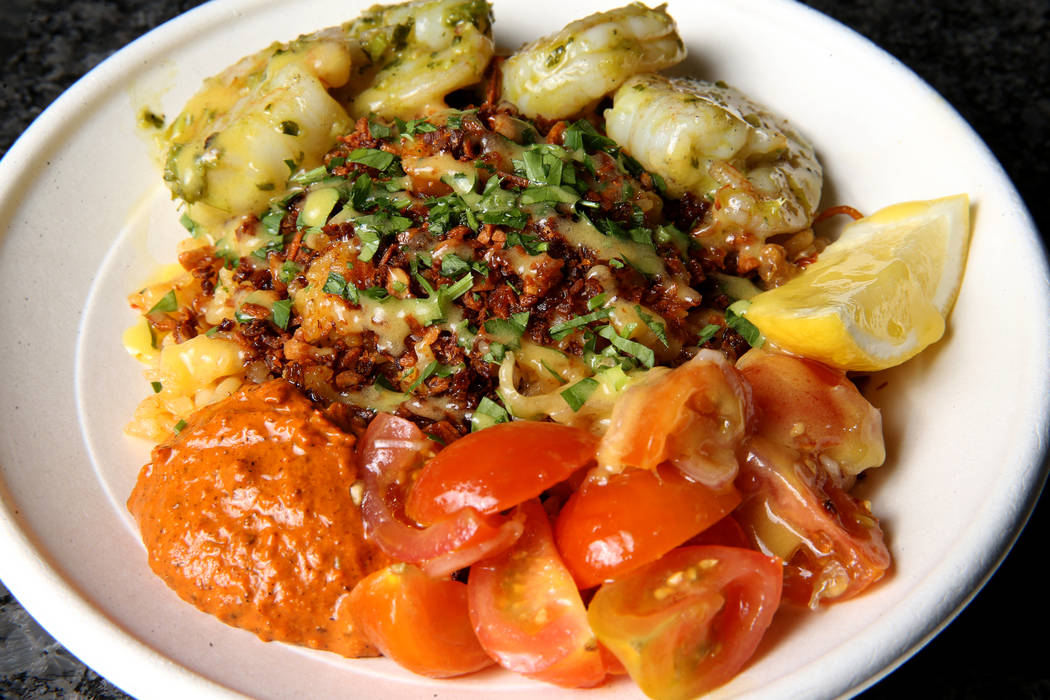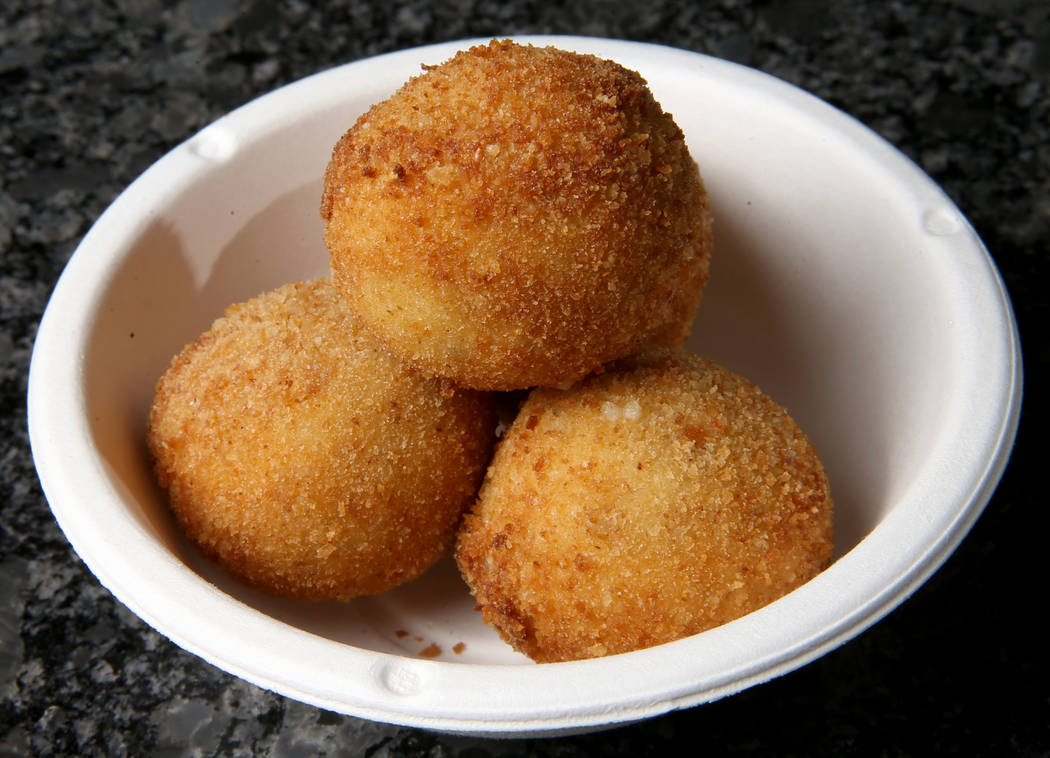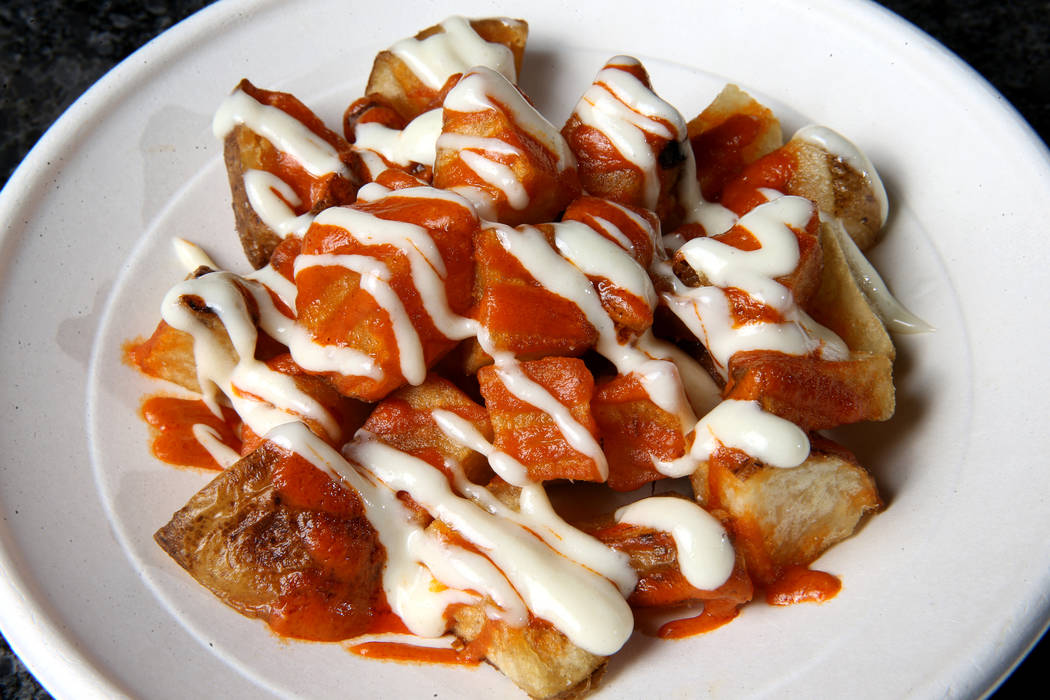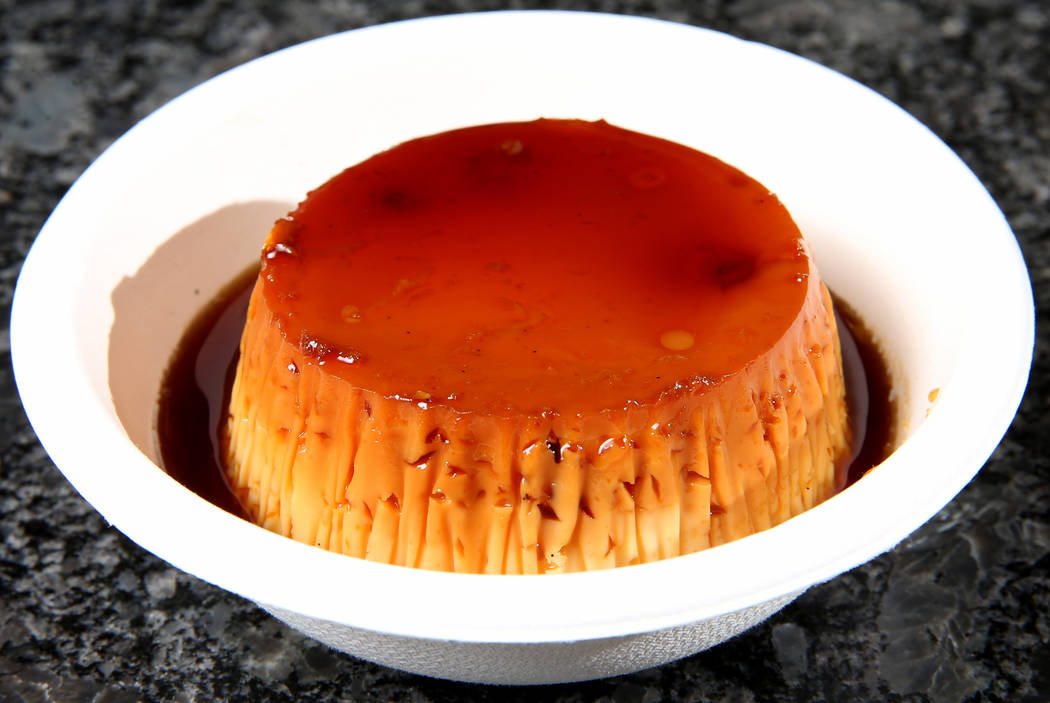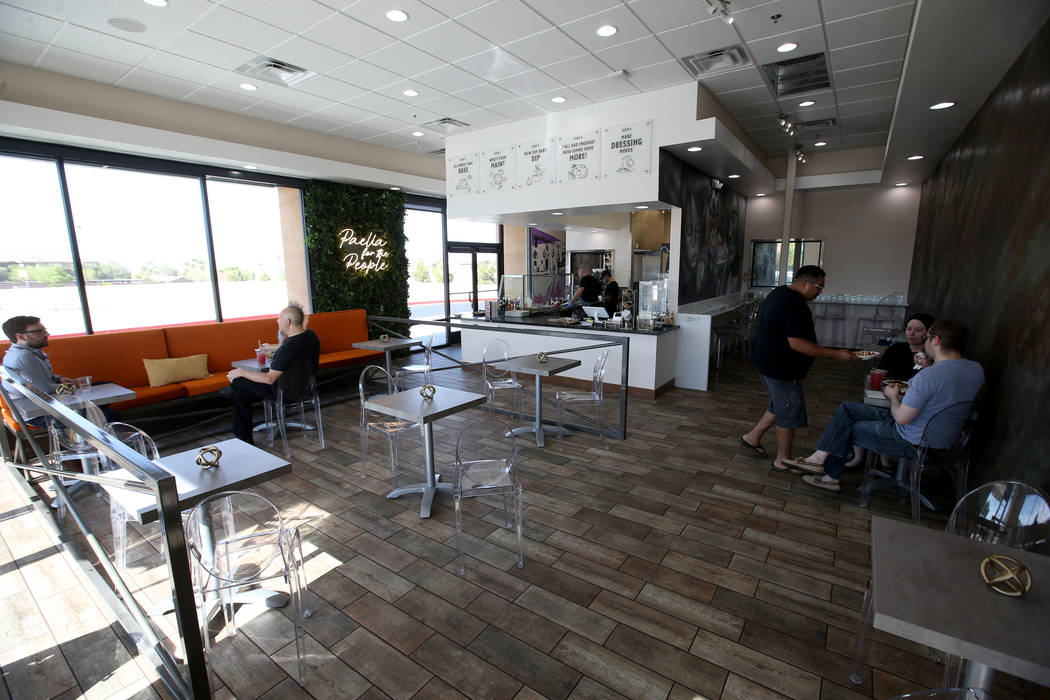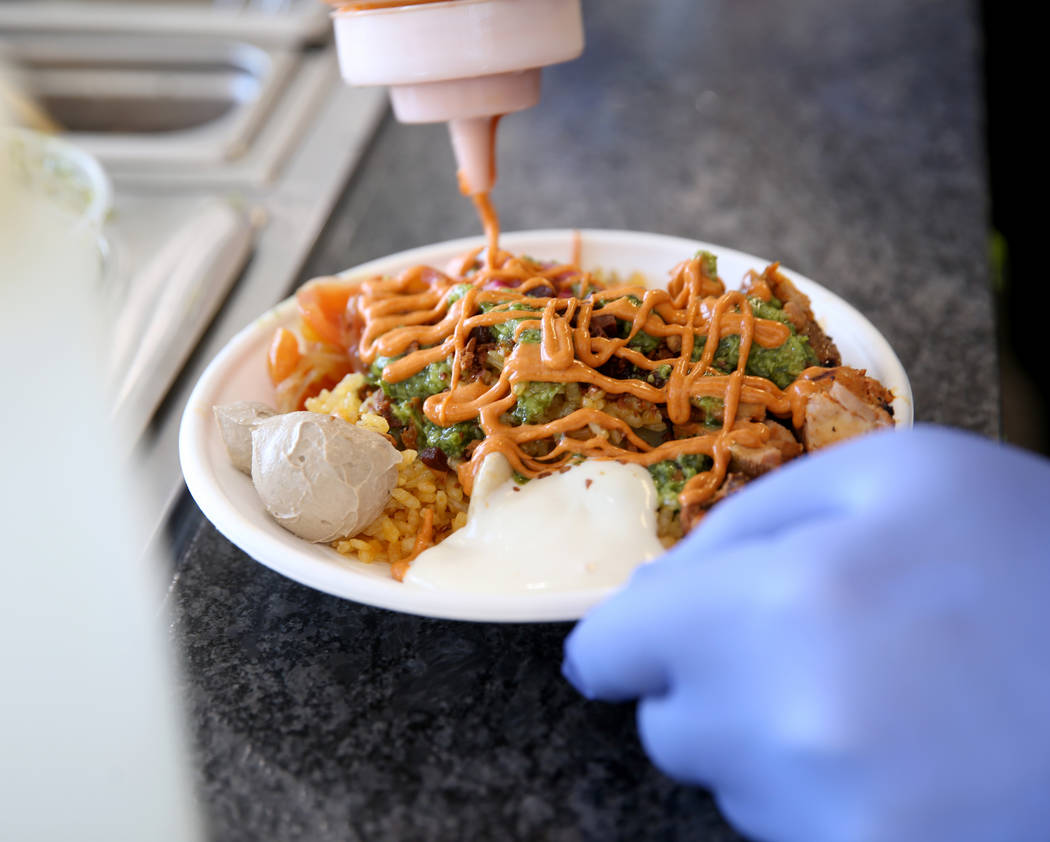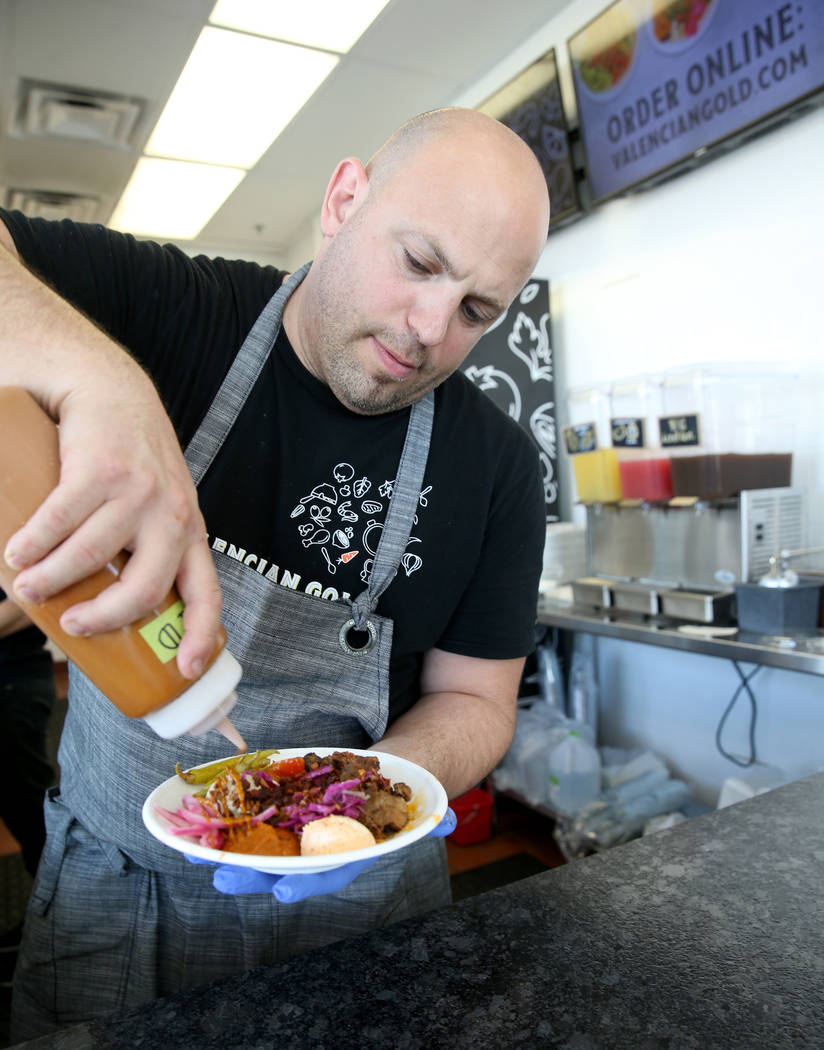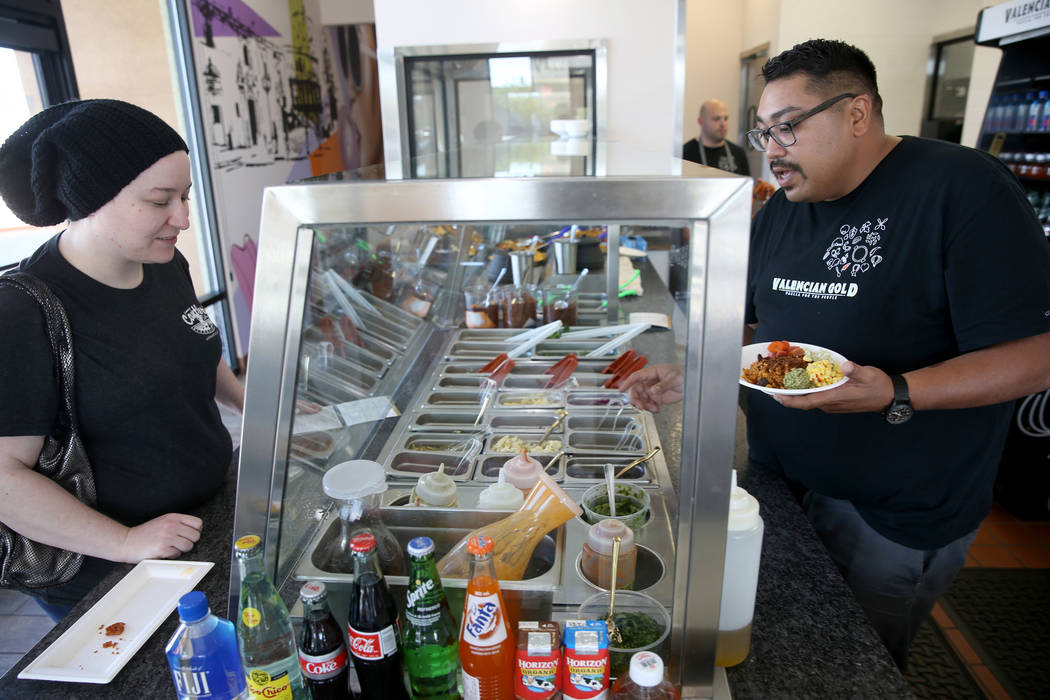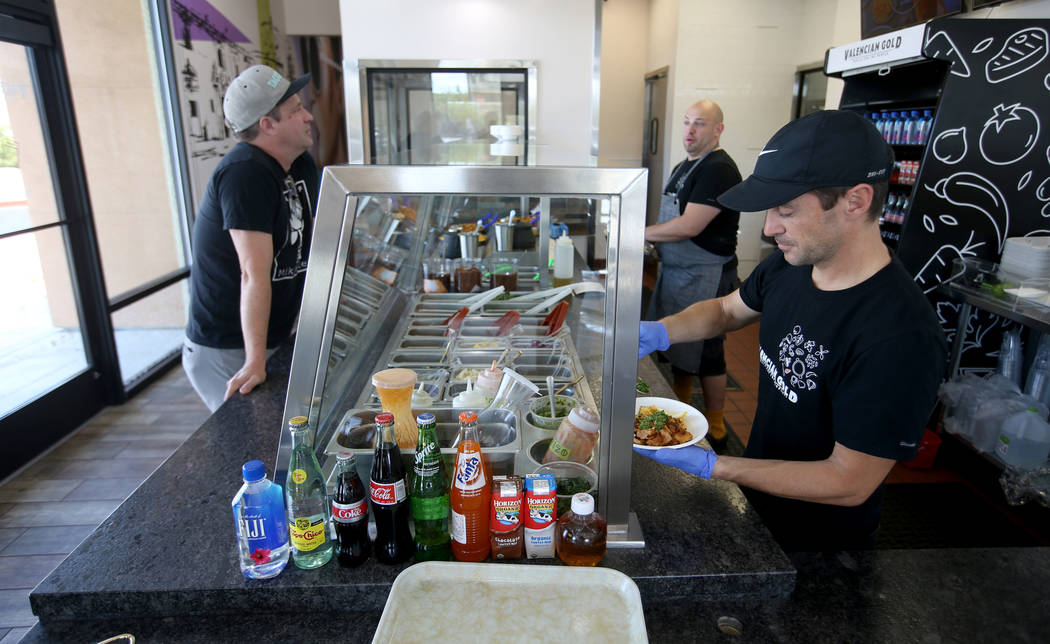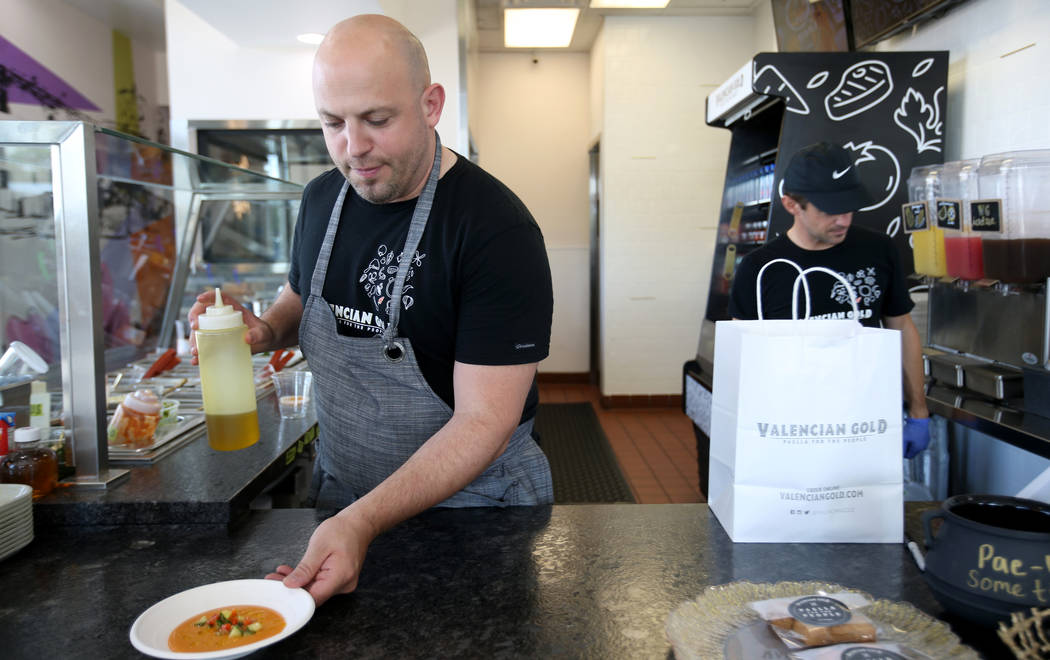New in southwest Las Vegas: Authentic, if a bit daring, paella
At first glance, the new restaurant on South Rainbow Boulevard is both familiar and intriguingly different.
The layout, cafeteria-style counter and build-your-own format are reminiscent of any number of quick-casual concepts in strip malls across the Las Vegas Valley, nationally even. Yet its warm colors, spray-painted murals and assorted funky touches — such as the machine filled with bright gold gumballs — betray a style and personality that are absent from many.
Then there’s the restaurant’s mantra, sprawled across a garden wall of faux plants in old-school neon tubing: paella for the people.
Welcome to Valencian Gold, possibly Las Vegas’ first quick-casual Spanish restaurant, where guests can get a bowl of paella made to order in under five minutes, for less than $10. And you don’t need to be a foodie to figure out how it works.
“A lot of times you go into a Spanish restaurant and it seems like they’re pushing you away and intimidating you with all the terminology,” chef Paras Shah says.
“You’re not cool enough,” his partner Jeff Weiss chimes in.
Don’t mistake their frustration with the way Spanish food is often presented in the U.S., with disdain for the cuisine itself. Their partnership is rooted in a friendship born when they were the sole American invitees to an international exchange program hosted by the Spanish government.
Weiss was recommended for the program by no less than José Andrés, for whom he had worked in Washington, D.C. His internship included stints with Adolfo Munoz in Toledo and with the Michelin-starred Dani Garcia in Marbella, Spain. Shah, who left a job with David Chang to take the journey, was assigned to Hotel Santo Mauro in Madrid, the Michelin two-star Portal de Echaurren in La Rioja, and Ferran Adrià’s legendary El Bulli.
Weiss was familiar with paella from his time at Andrés’ restaurants. But it was during that trip that he fell in love with the rice dish.
“On literally my last day working at Calima with Dani Garcia, my buddy who was on the line with me was like “Yo, you want to come to my parents’ place in Alicante? It’s my parents’ restaurant. They make paella. And they’re pretty good at it.’ And I was like ‘Hell yeah!’ So we rented a car that night, left after service, and it was like a five-hour drive through the night to Valencia. And we showed up on his parents’ doorstep.”
It was another road trip, from New Orleans to America’s West Coast, that finally put him on the path to creating Valencian Gold.
“Somewhere along the way, I stopped at a Chipotle,” he recalls.
“And I’m eating. And I just had this moment where I go, ‘Why has no one ever done a Spanish version of this?’ And then that thought expanded (into), ‘Why’s there no Spanish fast-casual? Why can’t we do that?’ ”
A visit to their new restaurant in the southwestern valley is likely to remind you of the Mexican chain, at least in the way you order. Guests assemble their dish step by step: base rice, main ingredient, dressing, condiments and sauce. (They’ve even created a clever way for all guests to share of the coveted crispy socarrat that forms at the bottom of the pan — cooking it separately and sprinkling it on at the end.)
The chefs have also designed six combinations they know will work. But they encourage guests to get creative and have fun.
“Yes, we have tasted and vetted pretty much every flavor in here, and we have put together our suggested bowls we know work well together,” Weiss says. “But who are we to say that you can’t put shrimp with a chicken rice? Or who are we to say that you can’t have romesco with (a certain) topping? The whole point is, we live in a day and age of individuality and the idea that we want to create our own experiences. And that’s why we designed it this way.”
The chefs break plenty of rules themselves. One of their two vegan bases isn’t even rice. It’s loosely based on a Spanish noodle dish called fideuá, but also contains couscous, quinoa, split peas, orzo and split lentils.
“It’s freaking delicious,” says Shah, without any apologies for straying from tradition. “The bottom line is you can cook it like a paella, do the exact same everything with it.”
That touch of irreverence, rooted in respect, is reflected in the restaurant’s two murals, spray-painted by famed Spanish street artist Xolaka. One, in particular, speaks to Shah.
“You have the abuela, or the grandmother. She is cooking the paella. And then on the other side, her granddaughter is eating the paella. So it’s kind of like one generation teaching the other generation how to cook paella. But I also see that as more of the abuela being Spain, teaching the newjacks, us, how to cook paella, and how to honor paella, over paella. So we’re essentially the young granddaughter trying to learn and move to the future with paella.”
Contact Al Mancini at amancini@reviewjournal.com. Follow @AlManciniVegas on Twitter.



